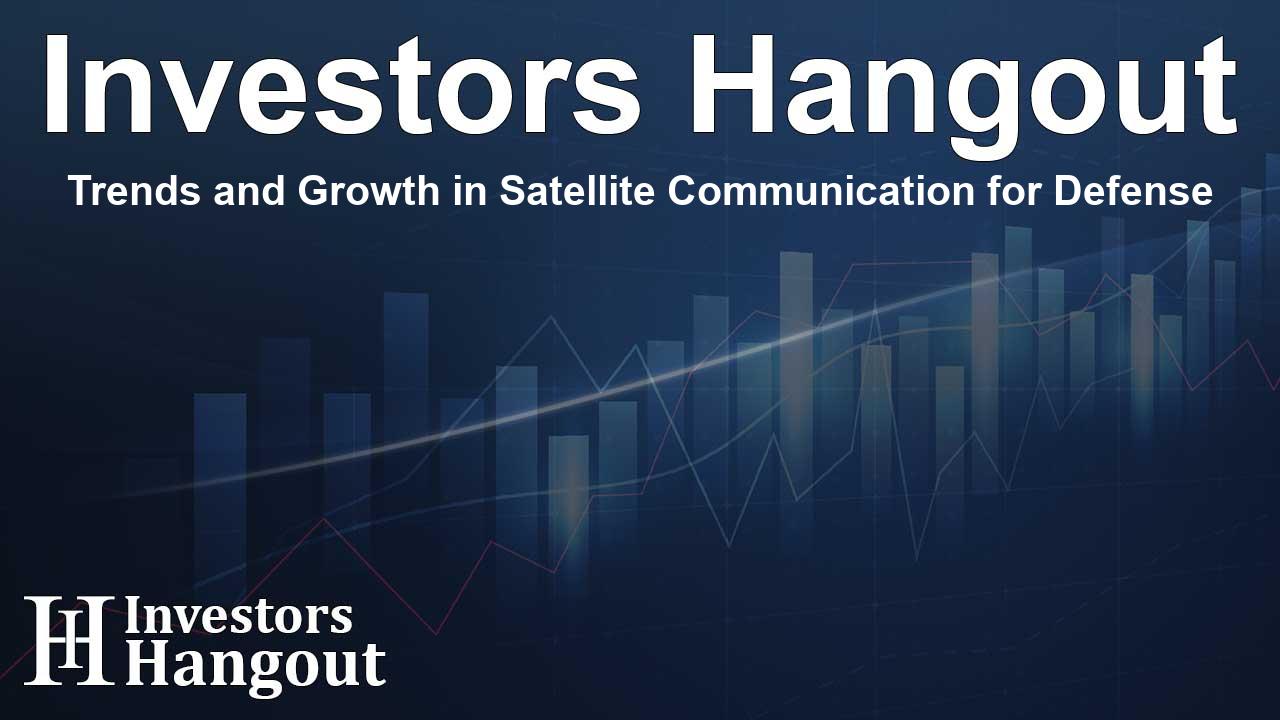Trends and Growth in Satellite Communication for Defense

Exploring Growth in Satellite Communication for Defense
The global satellite communication market in the defense sector is experiencing a substantial transformation. With an anticipated growth of USD 3.7 billion from 2024 to 2028, the industry is being propelled by rising security threats at sea and the expanding application of artificial intelligence (AI) in satellite communications. This upward trajectory reflects a compound annual growth rate (CAGR) of approximately 9.3% over this period. As various defense applications become dependent on real-time data and connectivity, satellite communication is emerging as a critical factor in modern warfare.
Key Trends Stimulating Growth
Integration of AI Technology
The integration of AI is significantly enhancing the capabilities of satellite communication systems. AI-powered solutions enable improved data management, allowing military analysts to process and interpret the vast amounts of data generated daily. For instance, satellites can capture over a terabyte of imagery, and without AI, analyzing this data would be inefficient and time-consuming. By utilizing machine learning algorithms, organizations in the defense sector are transforming how they manage satellite data, leading to smarter, faster decision-making processes.
Adoption of Multi-Orbit Communication
Multi-orbit satellite systems are becoming essential as they blend low Earth orbit (LEO) and geostationary orbit (GEO) functionalities. This hybrid approach allows for a seamless flow of information, crucial for operations that require instantaneous data transmission, such as intelligence, surveillance, and reconnaissance (ISR). Major players like Starlink and OneWeb are pushing the boundaries of satellite technology, leading to enhanced communications capabilities where traditional networks may falter.
Challenges in the Satellite Communication Landscape
High Costs of Equipment
Despite the advantages, the defense satellite communication sector faces several challenges, particularly regarding costs. The financial burden of developing satellite technology—ranging from sophisticated transponders to robust encryption systems—can be extremely high. Satellite bandwidth, essential for secure communication, can also incur significant monthly expenses, adding to the pressure on defense budgets.
Cybersecurity Concerns
As dependence on SATCOM increases, so do cybersecurity threats. Protecting sensitive military communication from unauthorized access is a primary concern for defense organizations. Robust encryption methods and secure antenna systems are being implemented to safeguard data integrity while ensuring operational continuity.
Market Segmentation Insights
The defense satellite communication market can be segmented into various applications and geographic regions:
By Application
- Surveillance and Tracking
- Remote Sensing
- Disaster Recovery
- Others
By Geography
- North America
- Europe
- Asia-Pacific
- South America
- Middle East and Africa
Your Key to Understanding the Market
The advent of miniaturized satellites, such as CubeSats and nanosatellites, provides defense organizations with more flexible, cost-effective solutions for real-time communications. Moreover, with ongoing advancements in satellite manufacturing and space technologies, there is a continuous improvement in the capabilities and applications of SATCOM. These developments are crucial, especially for countries relying on leading-edge satellite defense technology.
Conclusion
In summary, the satellite communication sector within defense is undergoing rapid evolution driven by high demand for advanced technology and real-time data. While challenges remain, especially around costs and cybersecurity, the opportunities for growth fueled by AI and multi-orbit solutions present a vibrant future for satellite communications in military applications.
Frequently Asked Questions
What is driving growth in the satellite communication market for defense?
The primary drivers include rising seaborne security threats and the integration of AI technology that enhances data management and decision-making capabilities.
How is AI affecting satellite communication?
AI is streamlining data processing and analysis, enabling agencies to efficiently manage the vast data collected from satellite imagery.
What are the major challenges faced by the defense satellite communication market?
Key challenges include high equipment costs and increasing cybersecurity concerns regarding data protection.
What is the expected CAGR for the satellite communication market in defense?
The market is expected to grow at a CAGR of approximately 9.3% from 2024 to 2028.
Which regions are leading in satellite communication for defense?
North America, Europe, and the Asia-Pacific regions are leading in this market segment, driven by advanced technological developments and military investments.
About Investors Hangout
Investors Hangout is a leading online stock forum for financial discussion and learning, offering a wide range of free tools and resources. It draws in traders of all levels, who exchange market knowledge, investigate trading tactics, and keep an eye on industry developments in real time. Featuring financial articles, stock message boards, quotes, charts, company profiles, and live news updates. Through cooperative learning and a wealth of informational resources, it helps users from novices creating their first portfolios to experts honing their techniques. Join Investors Hangout today: https://investorshangout.com/
Disclaimer: The content of this article is solely for general informational purposes only; it does not represent legal, financial, or investment advice. Investors Hangout does not offer financial advice; the author is not a licensed financial advisor. Consult a qualified advisor before making any financial or investment decisions based on this article. The author's interpretation of publicly available data shapes the opinions presented here; as a result, they should not be taken as advice to purchase, sell, or hold any securities mentioned or any other investments. The author does not guarantee the accuracy, completeness, or timeliness of any material, providing it "as is." Information and market conditions may change; past performance is not indicative of future outcomes. If any of the material offered here is inaccurate, please contact us for corrections.